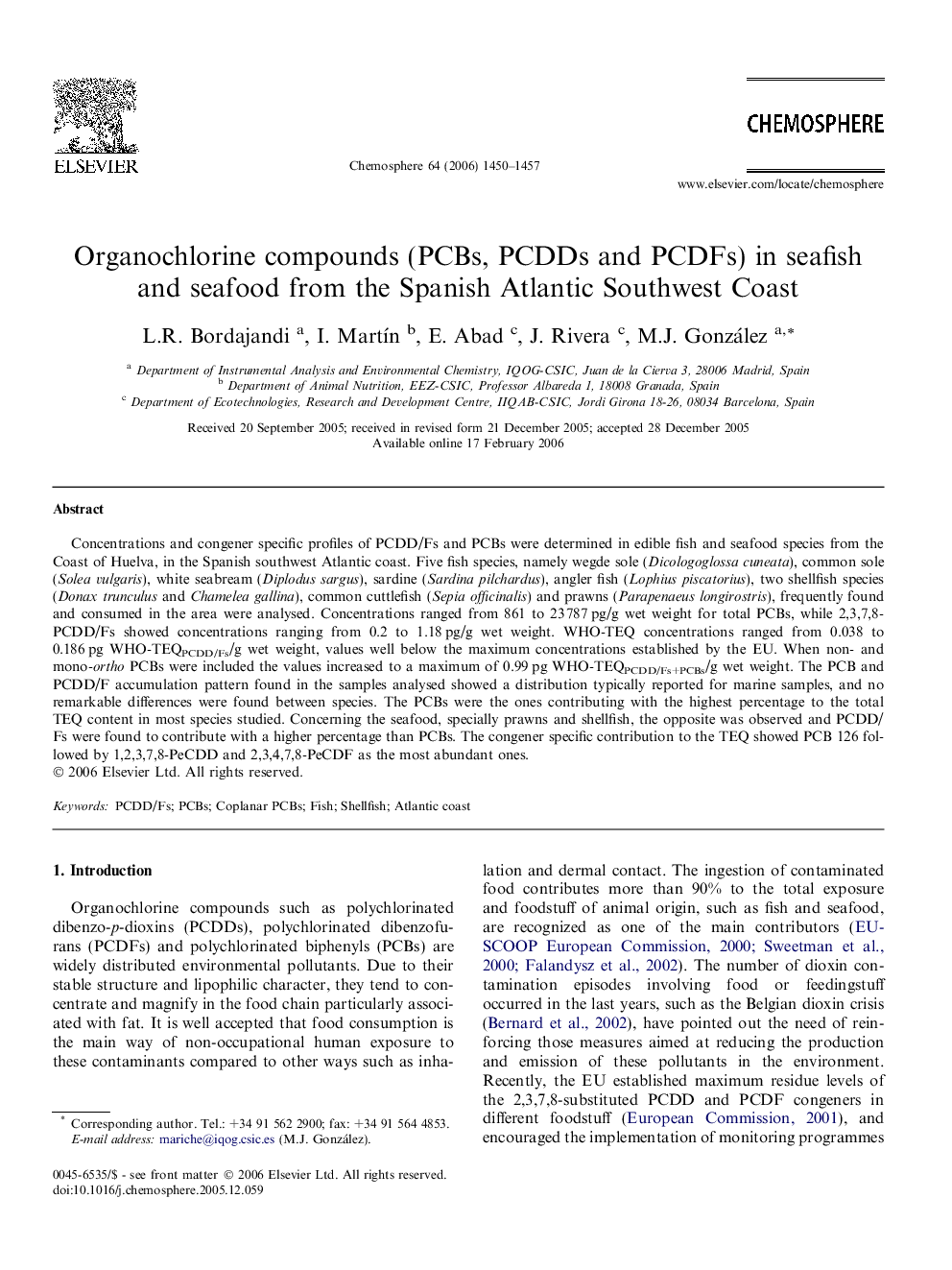| Article ID | Journal | Published Year | Pages | File Type |
|---|---|---|---|---|
| 4415494 | Chemosphere | 2006 | 8 Pages |
Concentrations and congener specific profiles of PCDD/Fs and PCBs were determined in edible fish and seafood species from the Coast of Huelva, in the Spanish southwest Atlantic coast. Five fish species, namely wegde sole (Dicologoglossa cuneata), common sole (Solea vulgaris), white seabream (Diplodus sargus), sardine (Sardina pilchardus), angler fish (Lophius piscatorius), two shellfish species (Donax trunculus and Chamelea gallina), common cuttlefish (Sepia officinalis) and prawns (Parapenaeus longirostris), frequently found and consumed in the area were analysed. Concentrations ranged from 861 to 23 787 pg/g wet weight for total PCBs, while 2,3,7,8-PCDD/Fs showed concentrations ranging from 0.2 to 1.18 pg/g wet weight. WHO-TEQ concentrations ranged from 0.038 to 0.186 pg WHO-TEQPCDD/Fs/g wet weight, values well below the maximum concentrations established by the EU. When non- and mono-ortho PCBs were included the values increased to a maximum of 0.99 pg WHO-TEQPCDD/Fs+PCBs/g wet weight. The PCB and PCDD/F accumulation pattern found in the samples analysed showed a distribution typically reported for marine samples, and no remarkable differences were found between species. The PCBs were the ones contributing with the highest percentage to the total TEQ content in most species studied. Concerning the seafood, specially prawns and shellfish, the opposite was observed and PCDD/Fs were found to contribute with a higher percentage than PCBs. The congener specific contribution to the TEQ showed PCB 126 followed by 1,2,3,7,8-PeCDD and 2,3,4,7,8-PeCDF as the most abundant ones.
